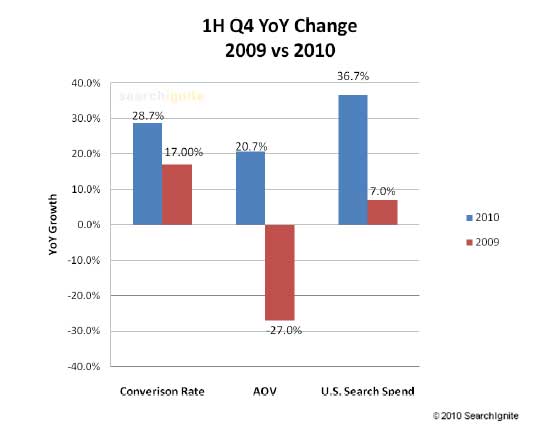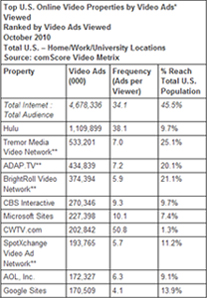I’ve always seen a great deal of potential in Facebook’s advertising offering. The premise is that ads are highly targeted based on users’ profile information. Theoretically, the more a user adds info about the kinds of things they like, the better idea Facebook has about what they are actually interested in, and can serve ads accordingly.
Does Facebook serve you ads that you find relevant? Let us know.
To be honest, it’s been hit or miss with me. I see a lot of ads for things that I actually do like, which is more than I can say for ads in other channels, but I see a lot of ads that make me wonder why I was possibly targeted for them as well.
 The question is: how good at targeting is Facebook? I stumbled across a post from Robert Brady at Righteous Marketing talking about the problems he’s having with Facebook ads.
The question is: how good at targeting is Facebook? I stumbled across a post from Robert Brady at Righteous Marketing talking about the problems he’s having with Facebook ads.
"I’ve set my relationship status to single," he explains. "Therefore, I see ads for dating sites, dating sites, and more dating sites. Based on my ads there must be at least a bazillion different dating sites that feel I am exactly who they want on their site. Asian girls, girls who golf, christian girls, desperate girls. You name it, I’ve seen an ad for it."
"The only problem: I don’t use dating sites," he adds. "So I give Facebook my feedback and hope for some different ads. Something I might be interested in. Every time I see that little message and have a little hope that my ads will improve. Do they?"
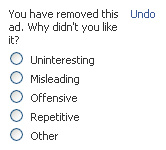 The answer would appear to be no. The message he’s referring to is when you click the "x" on a Facebook ad and Facebook delivers a dialogue box asking why you didn’t like the ad. Again, theoretically, Facebook should get the message that Brady doesn’t like ads for dating sites if he’s clicked that x on enough of them. One could argue that clicking the x on one should’ve been enough, though there are different target audiences for different dating sites.
The answer would appear to be no. The message he’s referring to is when you click the "x" on a Facebook ad and Facebook delivers a dialogue box asking why you didn’t like the ad. Again, theoretically, Facebook should get the message that Brady doesn’t like ads for dating sites if he’s clicked that x on enough of them. One could argue that clicking the x on one should’ve been enough, though there are different target audiences for different dating sites.
Is this just limited to dating sites though? Probably not.
Even if Facebook’s targeting isn’t always perfect, the concept behind it still does have a great deal of potential, and like I said, I still find ads on Facebook that are more relevant to me (at the consumer level as opposed to say, B2B) than probably on any other channel. This is the main reason it seems to me that an AdSense-like network could be a goldmine for Facebook. If they could deliver that kind of relevance on sites across the web (as users are logged into Facebook, which they will likely be on many, many sites) it could be pretty powerful.
But how much progress does Facebook have to make in targeting? Do they have a long way to go? How much of it is in the user’s hands? The more information you give Facebook about your interests, the more targeted your ads should be. Facebook’s new profile redesign already appears to be coaxing a lot more info out of people.
What do you think? Comment here.


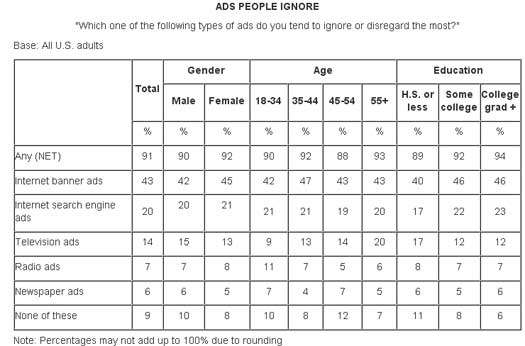
 Wojcicki also said, "How can we enable you, when you’re walking around, to find out the best local offers around? As an advertiser, how can I find out if someone saw my ad and went to a store? The local market is a huge market, we’ve always wanted to be in it."
Wojcicki also said, "How can we enable you, when you’re walking around, to find out the best local offers around? As an advertiser, how can I find out if someone saw my ad and went to a store? The local market is a huge market, we’ve always wanted to be in it."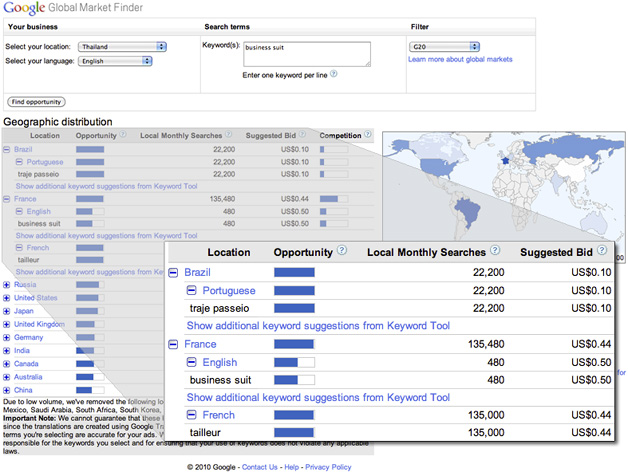

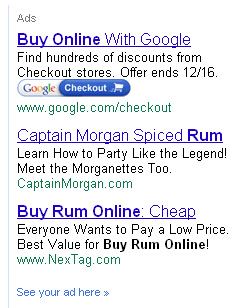 "Since then, hard alcohol advertisers have been able to promote websites that offer information about their brand, their products, or drinks that can be made with their products,"
"Since then, hard alcohol advertisers have been able to promote websites that offer information about their brand, their products, or drinks that can be made with their products," 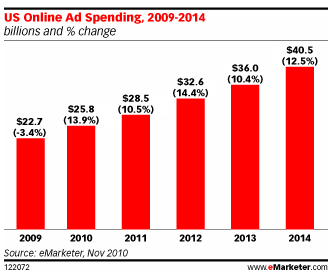
 "Plus, Groupon has a $600M local sales run rate," he adds. "It’s not obvious that Google is making that much from local advertisers. Plus, Google has always been about the algorithm and when they need to build outside of their core experience, they have done a great job in acquiring companies to help them in products like maps, Android, YouTube etc. While they’ve not succeeded in everything, they’re successes are pretty impressive."
"Plus, Groupon has a $600M local sales run rate," he adds. "It’s not obvious that Google is making that much from local advertisers. Plus, Google has always been about the algorithm and when they need to build outside of their core experience, they have done a great job in acquiring companies to help them in products like maps, Android, YouTube etc. While they’ve not succeeded in everything, they’re successes are pretty impressive."  "What we find is encouraging is that the FTC reaffirmed many of the key elements of the FTC February 2009 Online Behavioral Advertising Principles that distinguishes the unique first party relationship publishers have with consumers," she adds. "In particular, the report clearly distinguishes that the collection and use of data for first party purposes is recognized as a commonly accepted practice. The staff report specifically notes that they believe that contextual advertising should fall within the commonly accepted practices category. This is the majority of advertising that OPA members serve."
"What we find is encouraging is that the FTC reaffirmed many of the key elements of the FTC February 2009 Online Behavioral Advertising Principles that distinguishes the unique first party relationship publishers have with consumers," she adds. "In particular, the report clearly distinguishes that the collection and use of data for first party purposes is recognized as a commonly accepted practice. The staff report specifically notes that they believe that contextual advertising should fall within the commonly accepted practices category. This is the majority of advertising that OPA members serve."  "Technological and business ingenuity have spawned a whole new online culture and vocabulary – email, IMs, apps and blogs – that consumers have come to expect and enjoy," said FTC Chairman Jon Leibowitz. "The FTC wants to help ensure that the growing, changing, thriving information marketplace is built on a framework that promotes privacy, transparency, business innovation and consumer choice. We believe that’s what most Americans want as well,"
"Technological and business ingenuity have spawned a whole new online culture and vocabulary – email, IMs, apps and blogs – that consumers have come to expect and enjoy," said FTC Chairman Jon Leibowitz. "The FTC wants to help ensure that the growing, changing, thriving information marketplace is built on a framework that promotes privacy, transparency, business innovation and consumer choice. We believe that’s what most Americans want as well," 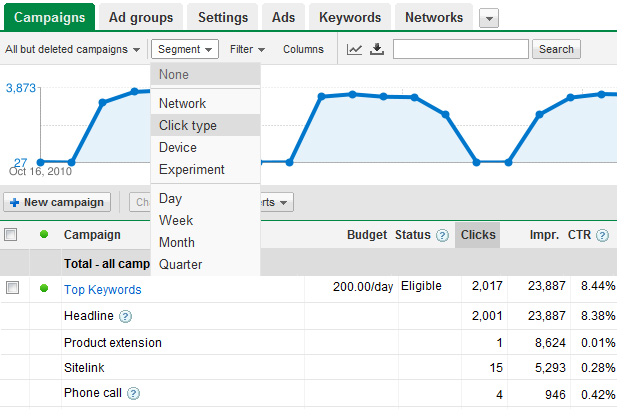

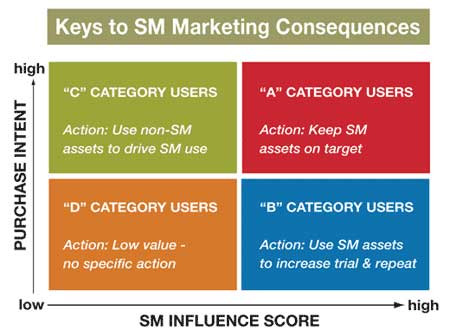
 "These visitors are tagged when they leave the site then later are shown ads with specific discounts and specials on items previously browsed as they surf elsewhere on the web," explains Yomtobian.
"These visitors are tagged when they leave the site then later are shown ads with specific discounts and specials on items previously browsed as they surf elsewhere on the web," explains Yomtobian. 
 There are limitations that come along with Facebook landing pages, but the good probably outweighs the bad.
There are limitations that come along with Facebook landing pages, but the good probably outweighs the bad. 